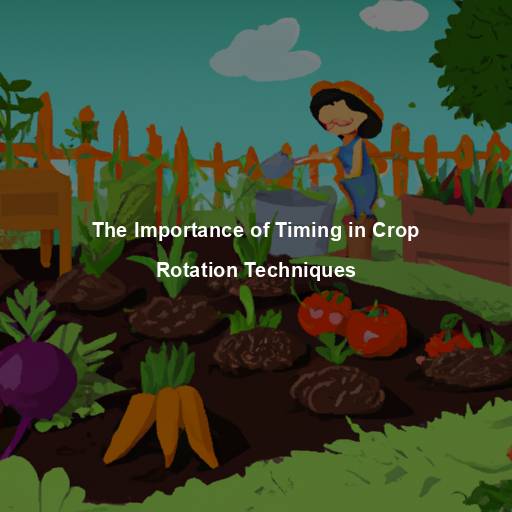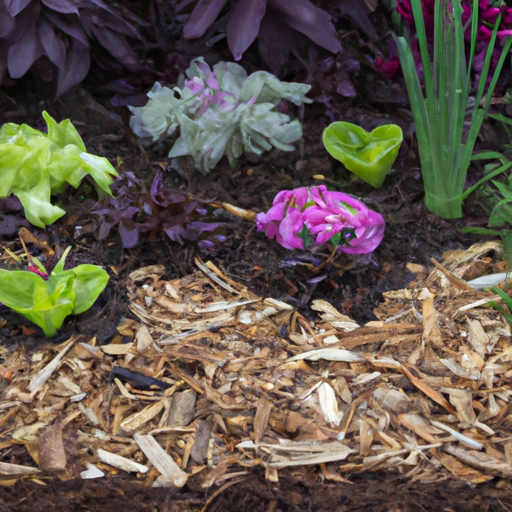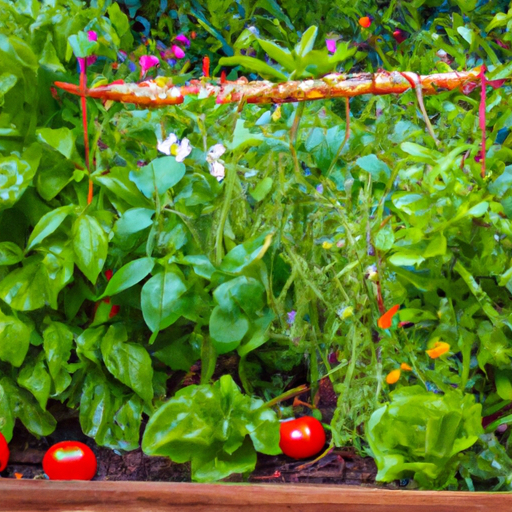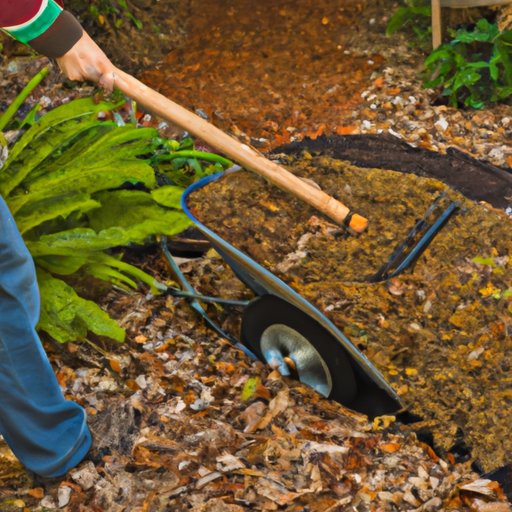As a Master Gardener, I have seen firsthand the benefits of companion planting in organic gardening. Companion planting involves strategically placing plants together that complement each other and help them grow stronger and healthier. This technique has been used for centuries by gardeners across the globe to improve yields, control pests, and reduce the need for chemical fertilizers.
One of the biggest advantages of using companion planting is its ability to attract beneficial insects while deterring harmful ones. For example, planting marigolds alongside vegetables can repel nematodes, which are microscopic worms that eat plant roots. At the same time, marigolds also attract ladybugs and lacewings that feed on aphids and other pests.
By creating a diverse ecosystem within your garden through companion planting, you can create a natural balance that reduces the need for pesticides and herbicides while promoting healthy growth for all your plants.
Improved Yield
As a Master Gardener, I cannot stress enough the benefits of intercropping and crop rotation techniques for improved yield in organic gardening.
When you plant two or more crops together in the same area, they can work together to improve soil health and ward off pests.
For example, planting beans near corn will help fix nitrogen into the soil which is essential for healthy growth.
Additionally, rotating crops each season helps prevent nutrient depletion and disease buildup.
By using these methods, your garden will produce healthier plants with higher yields without relying on chemical fertilizers or pesticides.
So don’t be afraid to experiment with companion planting – your harvest will thank you!
Natural Pest Control
As a Master Gardener, I can confidently say that one of the most effective natural pest control methods is through companion planting.
By using companion planting techniques, you can create biodiversity in your garden which helps to naturally deter pests and reduce their population.
The benefits of biodiversity are immense – it creates an ecosystem where beneficial insects thrive and keep harmful ones at bay.
For example, planting marigolds alongside tomatoes not only adds beauty to your garden but also deters nematodes and other soil-borne pests.
Similarly, growing basil next to peppers repels aphids while attracting bees for pollination.
Incorporating these simple yet powerful techniques into your organic gardening practices will not only help with pest control but also enhance the overall health and productivity of your plants.
So why rely on chemical pesticides when you have nature’s own solutions at hand? Trust me, your garden (and the environment) will thank you!
Reduced Need For Chemical Fertilizers
Reduced Need for Chemical Fertilizers:
Companion planting is a great way to reduce the need for chemical fertilizers in your organic garden. By pairing certain plants together, you can create a natural and sustainable ecosystem that provides nutrients to each other.
Here are some benefits of companion planting when it comes to reducing the use of chemical fertilizers:
– Nitrogen fixers: Some plants like beans and peas have nitrogen-fixing abilities, which means they take nitrogen from the air and convert it into a form that’s usable by plants. This helps increase soil fertility naturally without any additional inputs.
– Natural pest control: Companion planting also helps with natural pest control, which reduces the need for chemical pesticides. For example, marigolds repel nematodes while attracting beneficial insects like ladybugs and lacewings.
– Organic compost: When you pair legumes with heavy feeders like corn or tomatoes, you can create a closed-loop system where the legumes provide nitrogen to the soil, which feeds the other crops. Add organic compost regularly will make sure there’s enough nutrition available throughout growing season.
– Crop rotation: Companion planting can be used as part of crop rotation strategies too. Plant families tend to share similar nutrient needs and pests/diseases so rotating them helps maintain balance in soil quality.
– Soil improvement: Certain plant combinations help improve soil structure over time such as root vegetables (like carrots) break up compacted soils by penetrating deep into ground
Overall, incorporating companion planting practices into your gardening routine will not only save money on synthetic fertilizers but also benefit local ecosystems by promoting biodiversity within our green spaces!
Creating A Diverse Ecosystem
Imagine your garden as an ecosystem, where each plant plays a unique role in supporting the health and growth of other plants. This is the idea behind creating a diverse ecosystem through companion planting strategies in organic gardening. By pairing up complementary plants, you can create a mutually beneficial environment that provides ecological benefits such as natural pest control, improved soil fertility, and increased pollination. Take a look at this 3×3 table showcasing some popular companion planting combinations:
| Plant | Companion Plant | Benefits |
|——-|—————-|———-|
| Tomatoes | Basil | Improves tomato flavor and repels pests |
| Carrots | Onions | Repels carrot fly |
| Beans | Corn & Squash | Nitrogen fixation for beans, shade and support for corn & squash |
As a Master Gardener, I highly encourage incorporating these techniques into your gardening practices to enhance the health and productivity of your garden while reducing the need for harmful chemicals. Remember that each plant has its own unique preferences and requirements, so be sure to do your research before selecting companion plants. With careful planning and attention to detail, you can create a thriving ecosystem in your very own backyard that supports both the environment and your harvest.
Healthier Plant Growth
After creating a diverse ecosystem in your garden, the next step is to focus on promoting healthier plant growth through companion planting.
Companion plant combinations involve pairing plants that benefit each other and help maintain soil nutrient balance.
For example, planting legumes like beans or peas alongside nitrogen-hungry crops such as corn can provide natural fertilizer for both plants.
Another example is growing herbs like basil near tomatoes, which repels harmful insects and improves their flavor.
By utilizing these types of partnerships between plants, you can improve the overall health and productivity of your garden while reducing pests and diseases without relying on synthetic fertilizers or pesticides.
Remember to research different companion plant combinations specific to the plants you want to grow to get the most out of this organic gardening technique.
Frequently Asked Questions
What Are Some Examples Of Companion Plants That Work Well Together And Why?
When it comes to organic gardening, companion planting is a smart tactic that can lead to healthier plants and higher yields.
Take tomatoes, for example. These sun-loving veggies pair perfectly with basil, as the herb repels pests like aphids while also enhancing tomato flavor.
Meanwhile, carrots and onions make great companions because they each release different nutrients into the soil that the other plant needs.
And if you’re working with limited space, interplanting radishes among your leafy greens can help deter flea beetles and boost overall crop health.
Whether you’re looking to ward off insects or simply maximize your garden’s potential, there are plenty of examples of companion plants that work well together across a range of vegetables.
As a Master Gardener, I recommend incorporating these strategies into small-space gardening whenever possible for optimal results.
Can Companion Planting Help Prevent Soil Erosion And Improve Soil Health?
Companion planting can indeed help prevent soil erosion and improve soil health in organic gardening.
By pairing plants that have complementary root structures, such as shallow-rooted plants with deep-rooted ones, the soil is better able to retain moisture and nutrients.
Additionally, some companion plants are known for their ability to fix nitrogen into the soil, which is essential for plant growth.
This not only improves the overall health of the soil but also reduces the likelihood of nutrient leaching and runoff.
Finally, certain companion plants like clover or buckwheat can act as a living mulch, protecting bare ground from erosion caused by wind or water.
Overall, incorporating companion planting techniques into your gardening practices is an effective way to promote healthy soils while reducing environmental damage caused by soil erosion.
How Does Companion Planting Help Attract Beneficial Insects To The Garden?
To truly understand the role of companion plants in organic gardening, it’s important to look beyond their ability to attract beneficial insects. While this is certainly one benefit of companion planting, there are many others that shouldn’t be overlooked.
For example, certain combinations of plants can help improve soil health by fixing nitrogen or breaking up compacted soil. Others can provide shade and prevent soil erosion. Companion planting also allows for a diverse range of crops to be grown together, which helps promote overall garden health and resilience.
So while attracting beneficial insects is certainly an advantage of companion planting, it’s just one piece of the puzzle when it comes to creating a thriving organic garden ecosystem.
Are There Any Plants That Should Not Be Planted Together As Companions?
One common misconception about companion planting is that any combination of plants can be grown together. However, there are some plants that should not be planted together as companions due to potential drawbacks such as competition for resources or pest infestations.
For example, potatoes and tomatoes should not be planted together as they are both susceptible to the same pests and diseases. Additionally, while certain plant combinations may attract beneficial insects, it’s important to consider the overall health and productivity of each individual plant in the garden.
As a Master Gardener, it’s essential to carefully research and plan out companion planting strategies to maximize their benefits without causing harm to your garden ecosystem.
How Long Does It Take To See The Benefits Of Companion Planting In An Organic Garden?
How long it takes to see the benefits of companion planting in an organic garden largely depends on various factors such as soil fertility, climate condition and plant selection.
It is important to assess the impact of this gardening practice by measuring its success over time.
To maximize the benefits of companion planting, one must adhere to best practices which include selecting plants that have complementary growth habits and nutrient requirements.
As a Master Gardener, I recommend keeping a record of your observations and experiments so you can continually improve your technique and reap the rewards of healthy crops for years to come.
Conclusion
In conclusion, as a Master Gardener, I highly recommend using companion planting for organic gardening.
Not only does it provide numerous benefits such as preventing soil erosion and improving soil health, but it also attracts beneficial insects to your garden which can help control pests naturally.
One interesting statistic that may evoke emotion in our audience is that companion planting has been shown to increase crop yields by up to 40%.
This means more fresh produce for you and your family to enjoy while also reducing the need for harmful chemicals on your plants.
So why not give companion planting a try?
With a little research and planning, you can create a beautiful and thriving organic garden that will benefit both you and the environment.
Happy gardening!






